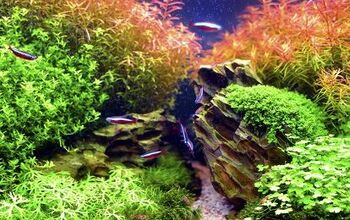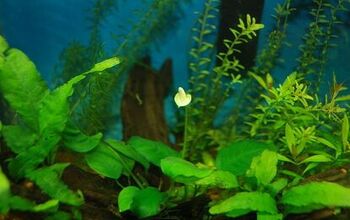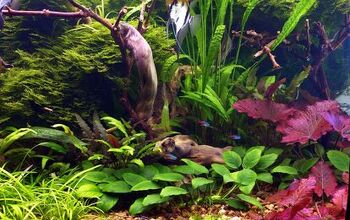How to Use Floating Plants in Your Planted Tank

When it comes to stocking a planted tank, you have many different options to choose from. Many novice planted aquarium enthusiasts make the mistake of only thinking about rooted plants when stocking their tank. If you really want to cultivate a lushly planted tank that looks completely natural, you should think about including some floating plants as well.
Best Floating Plants for Aquariums
While many aquarium plants must be rooted in substrate in order for them to grow, this is not true of floating plants. These plants do not gather nutrients from the substrate using their roots – they draw nutrients from the tank water and can thus be left unplanted. Some of the best floating plants to use in a freshwater planted tank include the following:
- Duckweed (Lemna minor): Perhaps the easiest floating plant to cultivate is duckweed. This plant produces small round leaves that grow very quickly. Duckweed is a good choice for breeding tanks and for tanks that house plant-eating species of fish.
Related: 4 Popular Cryptocoryne Species for Your Planted Tank
- Hornwort (Ceratophyllum demersum): Hornwort is a type of plant that can either be rooted or left to float freely. This plant produces hair-like foliage with stems growing up to 24 inches long. Hornwort can be kept in either high or low lighting, though it will grow faster in high lighting.
- Crystalwort (Riccia fluitans): This type of plant produces dense mats of vegetation and it can be used as ground cover as well as a floating plant. Crystalwort is easy to maintain and it can tolerate a variety of water temperatures.
Related: 4 Best Types of Lighting Systems for Planted Aquariums
- Java Moss (Taxiphyllum Barbieri): Java moss is another plant that can be rooted or left to float freely – it is also a popular choice for anchoring to driftwood. The higher the light, the faster java moss will grow.
- Brazilian Pennywort (Hydrocotyle leucocephala): This aquatic plant produces small penny-shaped leaves and it grows quickly in strong light. Brazilian pennywort can be used as a floating plant or a rooted plant.
Tips for Using Floating Plants
The key to maintaining floating plants in the freshwater aquarium is to ensure that your lighting is bright enough. Light is the most important nutrient that live plants need to grow and floating plants have the best access to light because they float on the surface of the tank water. Floating plants can be used to shade certain parts of your aquarium if you have fish that do not like bright lighting – they can also be used to provide cover for newly-hatched fry so the other fish in your tank do not eat them. Floating plants are also a great option for herbivorous species of fish, especially since many of them grow quickly.
When choosing floating plants for your aquarium, there are several factors to consider. First, think about the rate at which the plant grows – you do not want to choose a fast-growing plant for a small aquarium because it could quickly take over. You also need to think about the nutritional needs of the plant and adjust your lighting accordingly. Fortunately, many floating plants do not have excessive needs for lighting and they do not require much maintenance except for occasional trimming for certain species.
In order to achieve a completely natural look for your planted tank you have to think about all the different levels in your aquarium. It is easy to arrange rooted plants to give your tank a natural appearance, but making use of floating plants as well is what will truly set your planted tank apart.

Kate Barrington is the loving owner of two cats (Bagel and Munchkin) and a noisy herd of guinea pigs. Having grown up with golden retrievers, Kate has a great deal of experience with dogs but labels herself a lover of all pets. Having received a Bachelor's degree in English, Kate has combined her love for pets and her passion for writing to create her own freelance writing business, specializing in the pet niche.
More by Kate Barrington























